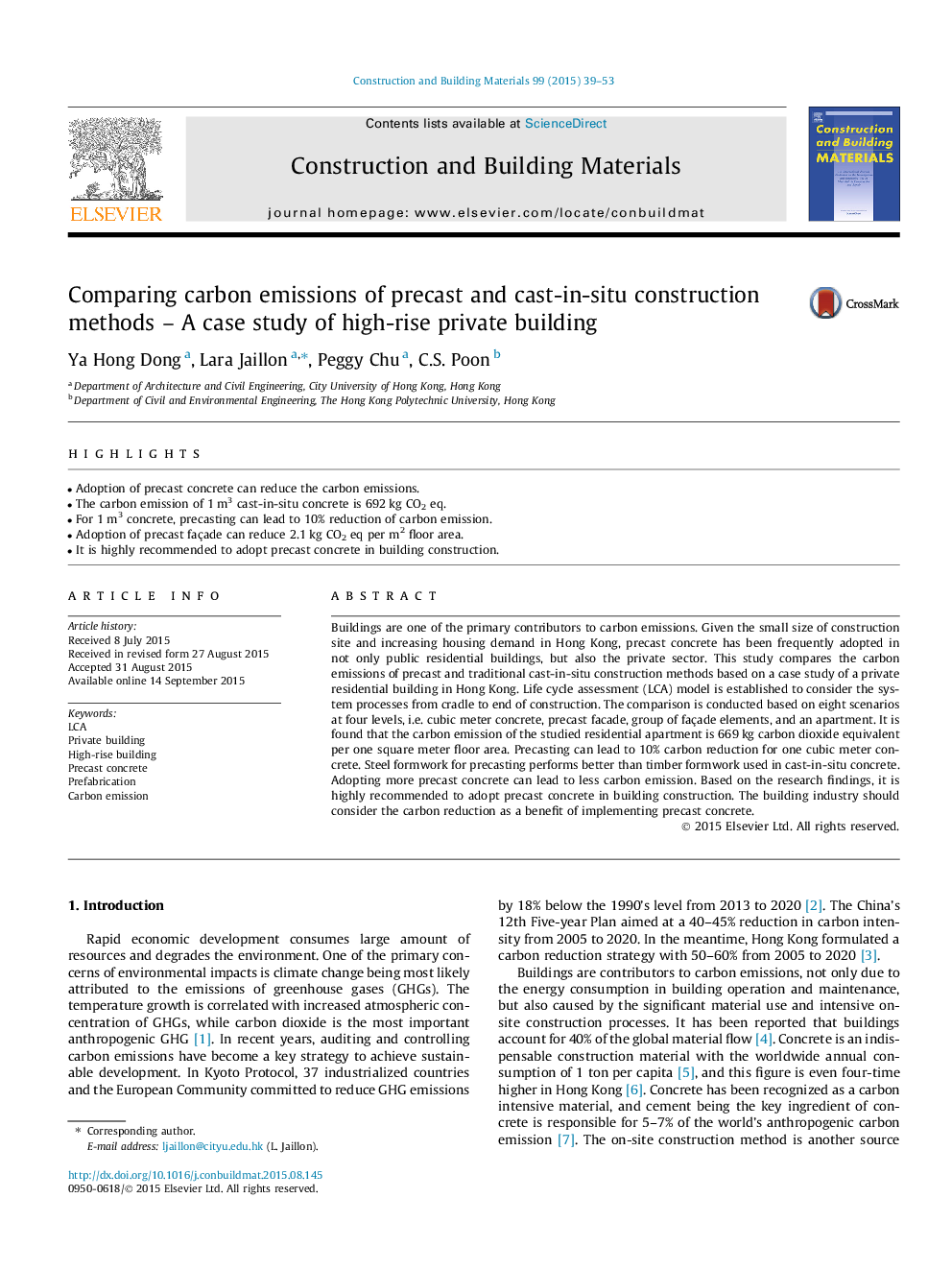| Article ID | Journal | Published Year | Pages | File Type |
|---|---|---|---|---|
| 6719742 | Construction and Building Materials | 2015 | 15 Pages |
Abstract
Buildings are one of the primary contributors to carbon emissions. Given the small size of construction site and increasing housing demand in Hong Kong, precast concrete has been frequently adopted in not only public residential buildings, but also the private sector. This study compares the carbon emissions of precast and traditional cast-in-situ construction methods based on a case study of a private residential building in Hong Kong. Life cycle assessment (LCA) model is established to consider the system processes from cradle to end of construction. The comparison is conducted based on eight scenarios at four levels, i.e. cubic meter concrete, precast facade, group of façade elements, and an apartment. It is found that the carbon emission of the studied residential apartment is 669Â kg carbon dioxide equivalent per one square meter floor area. Precasting can lead to 10% carbon reduction for one cubic meter concrete. Steel formwork for precasting performs better than timber formwork used in cast-in-situ concrete. Adopting more precast concrete can lead to less carbon emission. Based on the research findings, it is highly recommended to adopt precast concrete in building construction. The building industry should consider the carbon reduction as a benefit of implementing precast concrete.
Related Topics
Physical Sciences and Engineering
Engineering
Civil and Structural Engineering
Authors
Ya Hong Dong, Lara Jaillon, Peggy Chu, C.S. Poon,
